Discovering the perfect indoor plant for your low-light spaces can feel like striking gold, whether you’re just starting your gardening journey or have been nurturing plants for years. In “Best Indoor Plants for Low Light,” we’ve curated a selection that promises not only to thrive in the coziest corners of your home but also to bring a touch of nature’s magic to every room.
Imagine the joy of watching your plants flourish, even in areas that seemed inhospitable to greenery. This guide is your key to unlocking the secrets of successful indoor gardening, offering practical tips and insights that will boost your confidence and transform your living space into a lush, inviting sanctuary.
As you explore this collection, you’ll uncover the resilience and beauty of plants that ask little but give so much in return. With each page, you’ll gain the knowledge and assurance needed to cultivate an indoor oasis, turning even the darkest nooks into vibrant havens of life and color.
Peace Lily (Spathiphyllum wallisii)
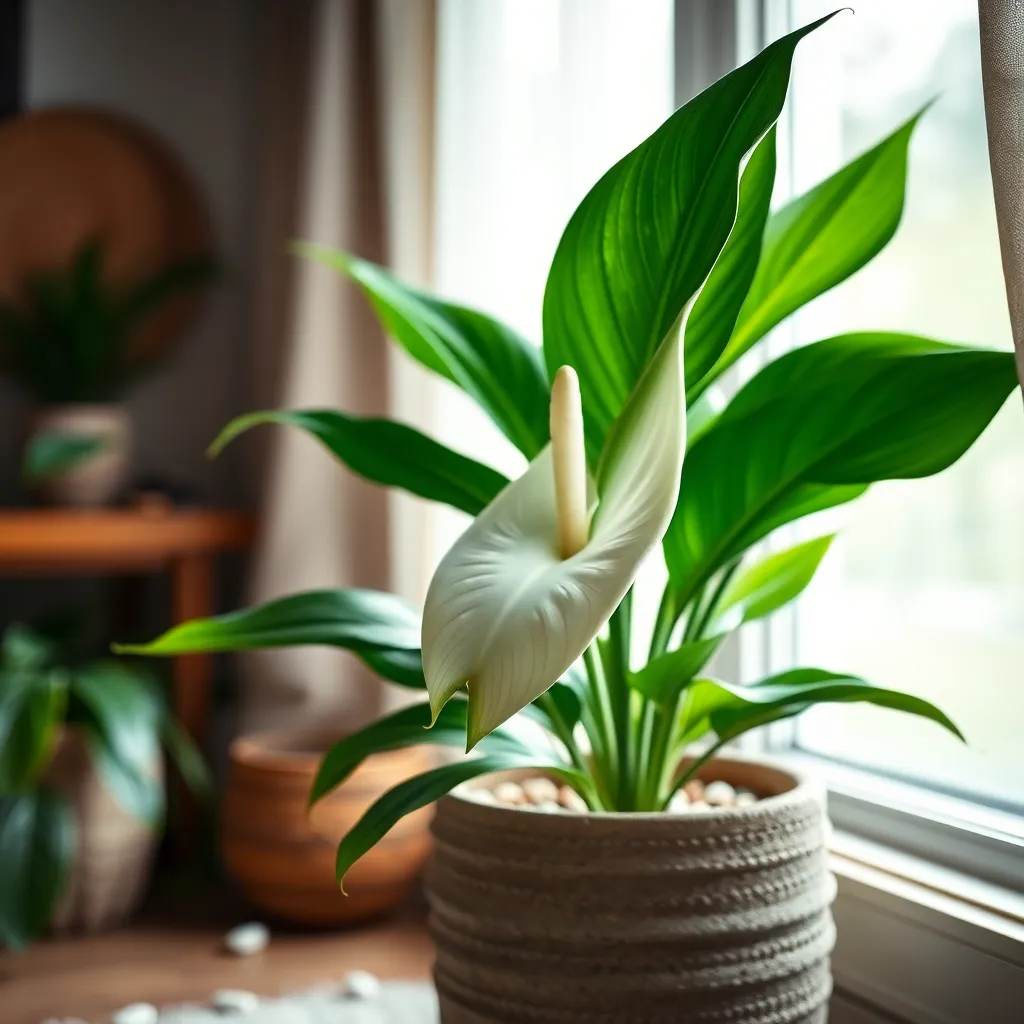
Peace Lily (Spathiphyllum wallisii) is a top choice for low-light indoor environments, thriving even in dim corners of your home. Known for its lush, dark green leaves and stunning white blooms, it not only adds beauty but also purifies the air.
When it comes to watering, Peace Lilies prefer to be kept moist but not soggy. It’s important to allow the top inch of soil to dry out before watering again, ensuring the plant’s roots are not waterlogged.
For soil, use a rich, well-draining potting mix that can retain moisture yet allow excess water to drain. A blend containing peat moss and perlite is ideal, as it provides the right balance of drainage and moisture retention.
To encourage blooming, place your Peace Lily in a spot with indirect sunlight; too much direct sun can scorch the leaves. For advanced care, consider wiping the leaves with a damp cloth regularly to remove dust and enhance photosynthesis.
Cast Iron Plant (Aspidistra elatior)
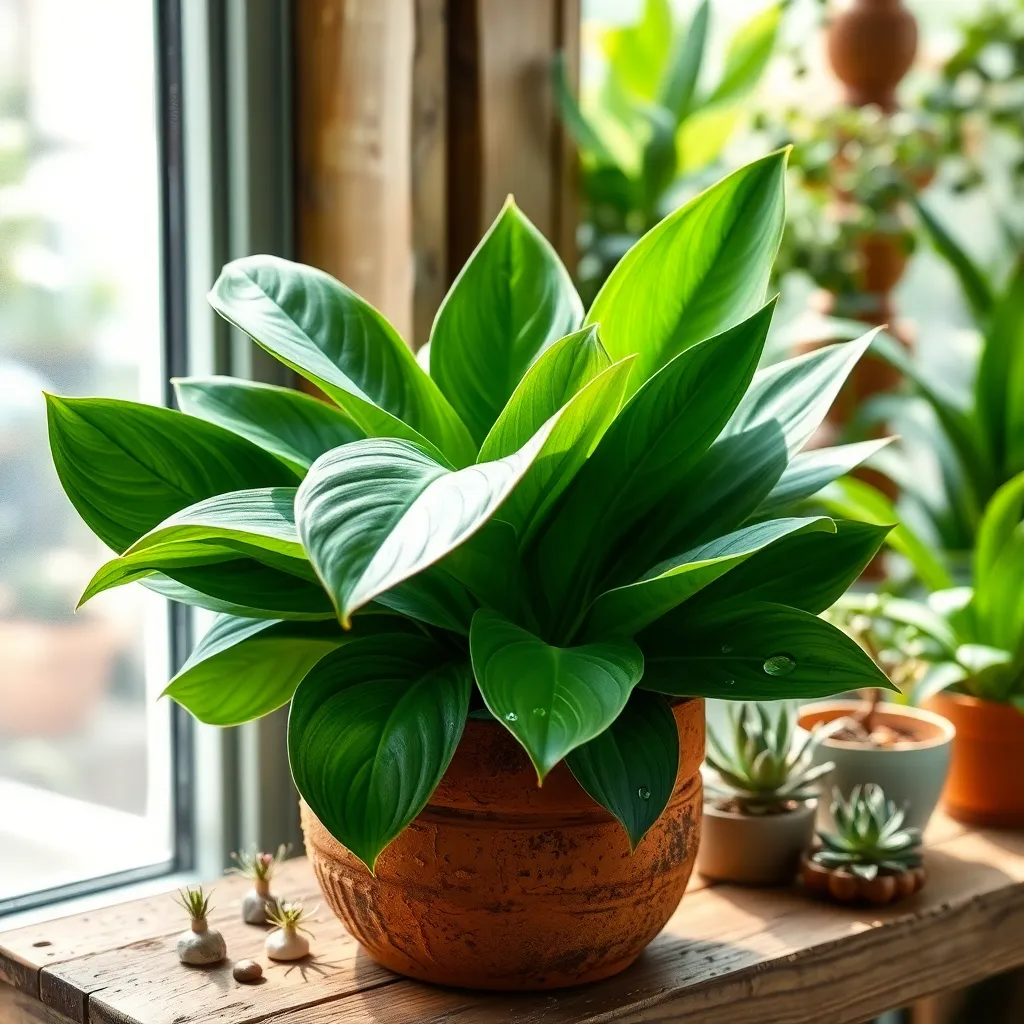
The Cast Iron Plant (Aspidistra elatior) is renowned for its resilience and ability to thrive in low-light conditions. This plant is perfect for beginners, as it requires minimal care while adding a touch of green to any indoor space.
When it comes to soil, opt for a well-draining potting mix to prevent waterlogging, which can harm the roots. Water the plant moderately, allowing the top inch of soil to dry out between waterings to avoid overwatering.
To maintain its lush appearance, dust the leaves occasionally with a damp cloth. This not only enhances its beauty but also keeps the plant healthy by maximizing its photosynthesis capability.
More experienced gardeners might consider occasional fertilization during the growing season. Use a balanced liquid fertilizer every two months to promote robust growth and vitality.
Chinese Evergreen (Aglaonema commutatum)
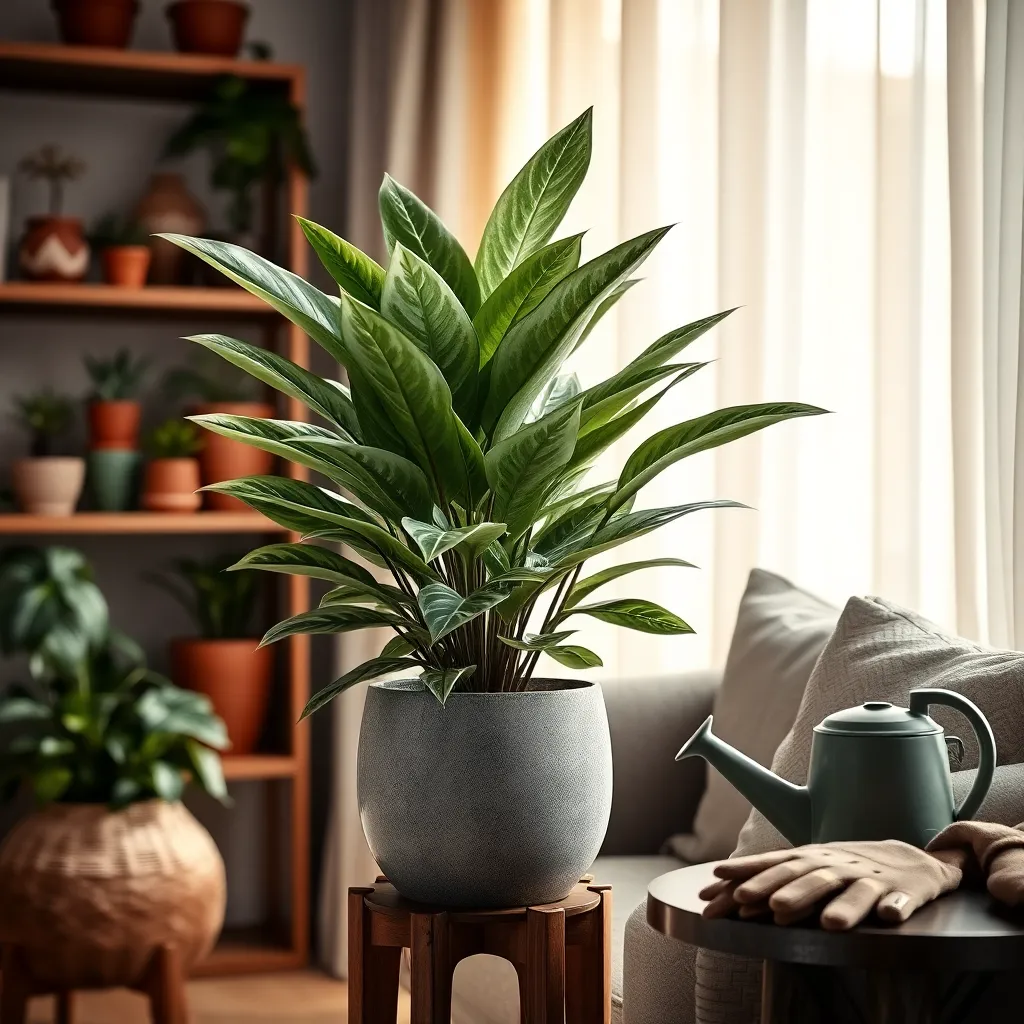
Chinese Evergreen (Aglaonema commutatum) is a perfect choice for those seeking a plant that thrives in low light conditions. This resilient plant is well-suited for both beginners and experienced gardeners due to its low maintenance requirements and attractive foliage.
To keep your Chinese Evergreen healthy, place it in a location with indirect light or even artificial lighting. These plants do best in temperatures between 65-80°F, making them ideal for indoor environments.
Watering is straightforward: allow the top inch of soil to dry out between waterings to prevent root rot. Using a pot with good drainage and a well-aerated soil mix, such as one containing peat and perlite, will further ensure your plant’s success.
For advanced care, consider occasionally misting the leaves to maintain humidity, especially in drier indoor climates. Fertilize sparingly, about once every two months, with a balanced, water-soluble fertilizer to encourage vibrant growth.
Spider Plant (Chlorophytum comosum)
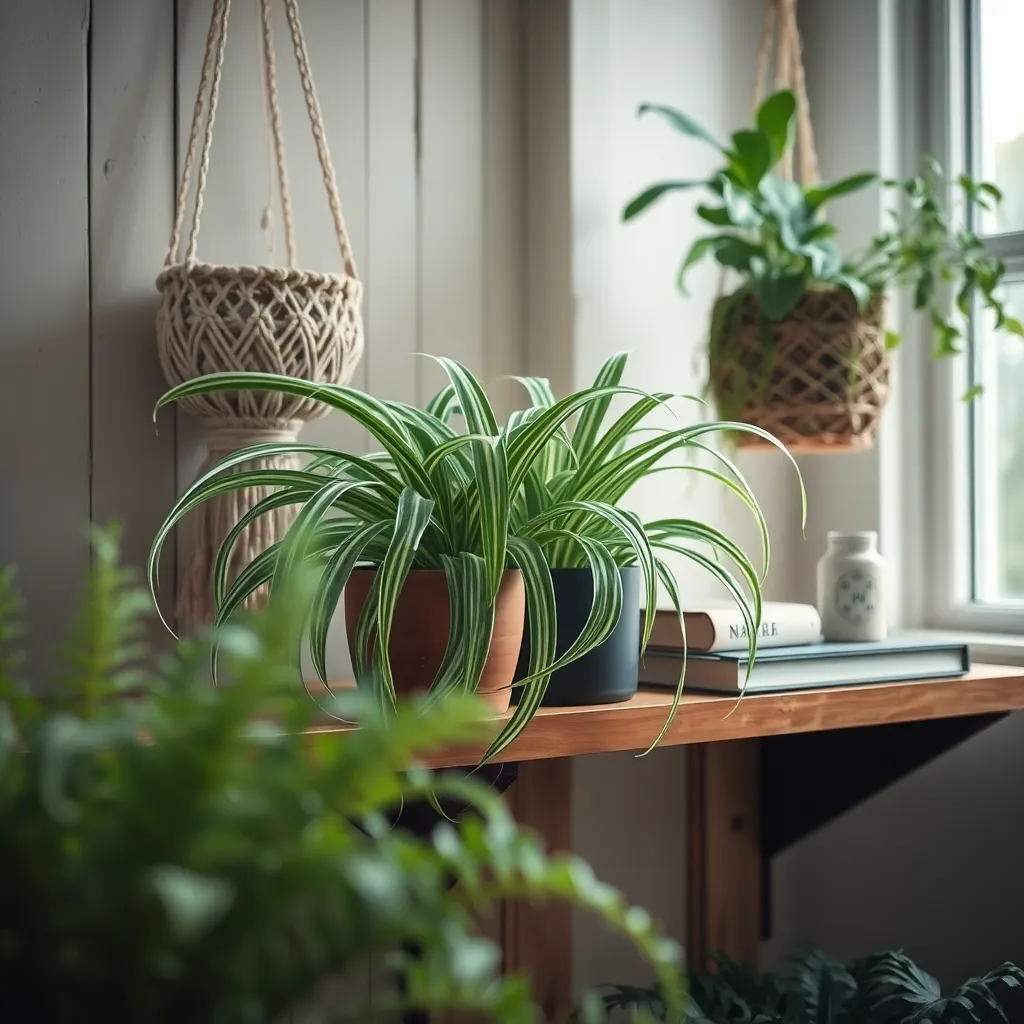
Spider plants, scientifically known as Chlorophytum comosum, are a fantastic choice for those seeking low-maintenance indoor greenery. These resilient plants thrive in low to medium light, making them perfect for shaded corners of your home.
One of the key aspects of spider plant care is proper watering. Allow the top inch of soil to dry out between waterings to prevent root rot, a common issue with this plant.
To promote healthy growth, use a well-draining potting mix rich in organic matter. A mix of peat, pine bark, and perlite is ideal to ensure the plant doesn’t sit in water.
Additionally, spider plants benefit from regular feeding during the growing season. Fertilize with a balanced liquid fertilizer every 4-6 weeks from spring through early fall to support robust growth and vibrant foliage.
For those looking to propagate, spider plants are incredibly user-friendly. Simply snip off one of the plantlets or “spiderettes” that dangle from the main plant and root it in water or soil to start a new plant.
Heartleaf Philodendron (Philodendron hederaceum)
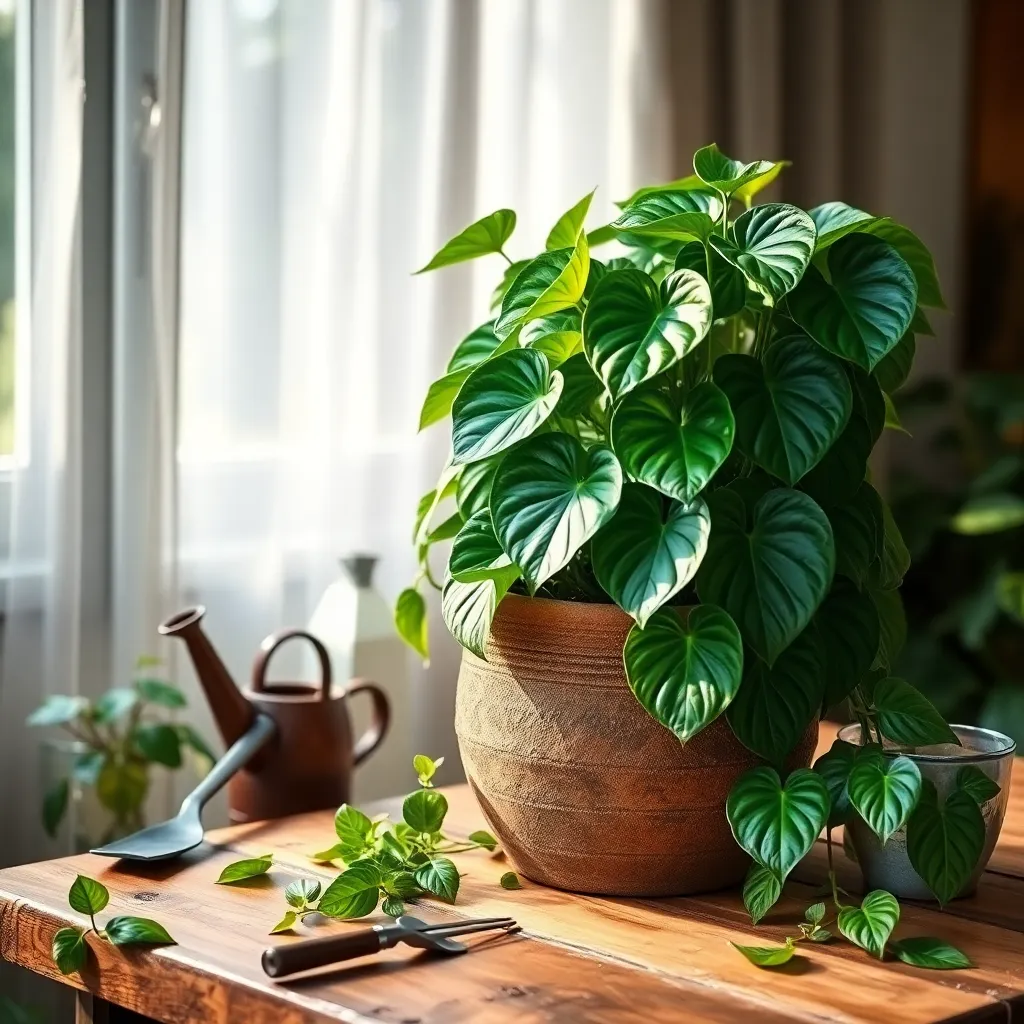
Another excellent choice for low-light environments is the Heartleaf Philodendron (Philodendron hederaceum), a robust and adaptable plant. Its lush, heart-shaped leaves are not only visually appealing but also effective at improving indoor air quality, making it a perfect addition to any room.
When caring for a Heartleaf Philodendron, it’s important to note that it thrives with minimal direct sunlight. These plants prefer bright, indirect light but can tolerate lower light conditions, which makes them ideal for offices or rooms with fewer windows.
Watering your Philodendron should be done when the top inch of soil feels dry to the touch, typically once a week. However, during the winter months, you may find that it requires less frequent watering due to lower evaporation rates.
For optimal growth, use a well-draining potting mix such as one composed of peat, perlite, and pine bark. This ensures that excess water drains away while retaining enough moisture for the plant’s roots.
To promote a fuller appearance, consider pinching back the stems periodically. This encourages the plant to grow more leaves and maintain a bushy form, which is especially useful if you want to use it as a hanging plant or on a shelf.
Conclusion: Growing Success with These Plants
As we’ve explored the best indoor plants for low light, it’s clear that nurturing relationships requires similar care and attention. Just like selecting the right plant, building a thriving relationship involves understanding needs—whether it’s communication like the peace lily’s elegance, adaptability akin to the resilient snake plant, or trust similar to the steadfast pothos. The emotional support of a cozy environment, mirrored by the calming presence of the ZZ plant, and the importance of patience, much like the slow-growing cast iron plant, are essential.
To take your first step toward fostering these qualities, choose one plant that resonates with you and introduce it into your shared space, allowing it to inspire daily reminders of your relationship goals. As you embark on this journey, remember to bookmark this article, ensuring you have a ready resource to revisit for guidance and inspiration.
By nurturing both your environment and your relationships, you set the stage for lasting success. Embrace this opportunity to cultivate growth, knowing that with each small step, you are building a relationship that flourishes in even the most challenging conditions. Here’s to your enduring relationship success, blooming beautifully over time!
